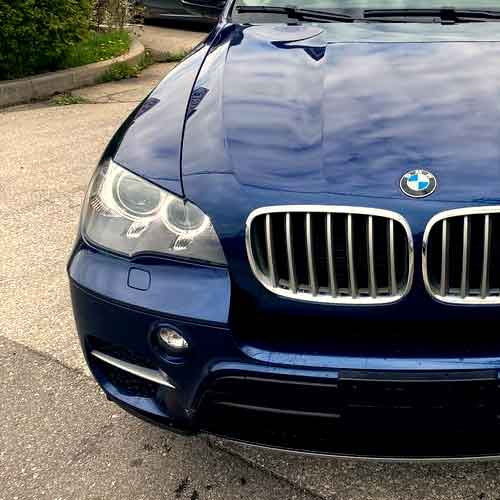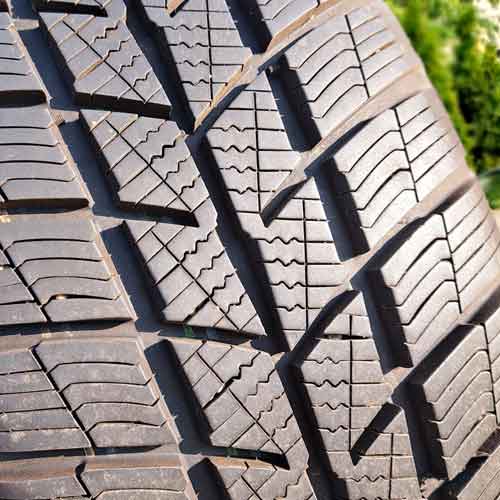The Barum Polaris 5 and the Kormoran Snow are both notable players in the winter tire game, as they come up with distinctive expertise in handling and comfort, catering to a variety of driving needs and road conditions. Let’s check these boys out in more details.

Table of Contents
Sizes Info
The Barum Polaris 5 (review) comes in 74 total sizes, in 13 to 19 inches wheels, with following specs.
- Speed ratings: T, H and V.
- Load ratings: SL and XL.
- Tread depth: 9 to 10/32″.
- Weight: 15 to 26 lbs.
- Tread warranty: None.
On the other side, the Kormoran Snow comes in 15 to 18 inches wheels, with following specs.
- Speed ratings: T, H and V.
- Load ratings: SL and XL.
- Tread depth: 10/32″ on all.
- Weight: 16 to 24 lbs.
- Tread warranty: None.
Ice Traction
When it comes to navigating treacherous icy surfaces, the Barum Polaris 5 asserts its dominance with unwavering confidence.

It outperforms its competitor by stopping a whole second quicker on average, due to it’s more stable longitudinal gripping capabilities.
This remarkable advantage extends to acceleration as well, with the Barum Polaris 5 showcasing superior speed control up to 40 mph.
The Barum basically offers more biters per its tread’s surface area. In other words, its tread is more crowded up with biting edges, for you example you see multiple angled slits going in both lateral directions, along with more aggressive siping and in-groove notches.
All these offer superior ice traction, in both gripping and handling departments.
On the other hand, the Kormoran Snow’s shortcomings in this domain, is due to its wider tread voids, for the most part.
So you get fewer notches per square inch of the tread (if you will).
Moreover the tire also lacks features such as multi-angled siping, which further detract from its performance.
Snow Traction
Now before starting here, I have to say, both tires showcase their prowess in snowy landscapes, delivering impressive performance values, no doubt.
Though with a more aggressive tread pattern, the Kormoran Snow edges ahead here, particularly when encountering fluffy snow.
Basically, the wider tread voids of this tire allow for better snow-to-snow contact, with the lug voids effectively retaining fluffy snow particles within their interconnected grooves.
This is significant, because snowflakes produce better friction, attaching to themselves, instead of rubber (of the tread).
On the other side, the Barum Polaris 5 presents a more closed design with a continuous running rib in the middle of the tread, devoid of any interlocking grooves. Basically in essence the tire features a less aggressive pattern.
So you get limited traction on this tire.
And yes, adding to that, is its missing scooping lugs, so the tire does not offer a good enough paddling abilities like seen on the Kormoran.
Comfort Levels
The overall ride comfort encompasses two aspects: noise and the tire’s ability to absorb road shocks. Let’s pick them both separately.
Noise Generation Enhancement
Tires make noise due to two main reasons. First, when air hits the sides of the tire as it rolls, it creates noise that enters through the tire’s edges. Second, the patterns on the tire’s surface can cause sound waves to bounce around and create more noise.
Now the Koroman tires are designed to reduce the first type of noise. They have very closed up shoulders, and some other features, that prevent a lot of air from entering through the edges of the tire. Basiaclly you can say, that’s killing noise at the source.
Though the problem begins when the reduced air particles still make more noise bounching the walls of the tread, leading to what they call in-groove resonance.
The Barum is quieter overall on the other hand, as they deal with this resonance by advanced technology that changes the shape of the patterns on the tire’s surface.
What’s happening here is that when air particles hit these modified patterns, they create different tones. These tones cancel each other out, reducing the overall noise produced by the tire.
Road Vibration Dampening
Tires are important for making the ride smoother by reducing vibrations and bumps from the road, as they act like an extra suspension system (if you will), for the vehicle, providing stability.
Now here, the Koroman shines with its excellent performance in managing uneven road surfaces. It has a special rubber composition that helps absorb the disturbances caused by bumps and uneven parts of the road. This results in a smoother and more comfortable ride for the driver and passengers.
In contrast, the Polaris 5 is not as efficient at absorbing these bumps and irregularities. This is because the Barum tire uses a harder rubber compound, which is intentionally designed to last longer. It prioritizes the lifespan of the tire over absorbing vibrations from the road.
Dry Performance
Dry grip, determined by the extent of rubber contact with the road surface, relies on two key components, namely the grip, which is also known as directional grip (so it makes sense its measure with braking distances), and then there’s lateral traction, which gets calculated with cornering abilities.
Let’s start with grip.
Longitudinal Grip
So this (directional) grip, refers to the tire’s efficiency in maintaining a solid connection with the road when rolling straight, where the tire’s central area bears the most weight concentration.
So it makes sense why, how much rubber (of tread’s central area), meeting the road is significant here.
And that the very reason why the Barum is taking the lead here, as the tire ensures a more consistent surface contact with its continuous running rib, and closed up tread desing, overall, resulting in superior performance.
In comparison, although the Kormoran Snow also features an almost continuous running layer in the central tread area, it lacks the streamlined design of its counterpart, due to wider lateral tread voids, for the most part.
Consequently, it experiences a braking distance almost 8 feet longer than the Polaris 5.
Lateral Grip
Handling, on the other hand, relies on the tire’s shoulder areas and overall weight.
So why is that?
Well, this is because, when cornering, the weight (on the tire), shifts towards the shoulders due to inertia, placing significant importance on the connection between the shoulder lugs and the road.
And here again, the Barum Polaris 5, with its closed-up shoulder lugs, offers better performance.
In contrast, the Kormoran Snow, besides featuring wider grooves, so each of its lug bears more weight pressure, resulting in the tread’s susceptibility to flex.
This bending of the lugs (during cornering), leads to a weakened steering feedback and reduced balance between under and oversteering.
And this of course leads to lagging handling.
Summing up
In terms of ice traction, the Barum Polaris 5 tire outperforms its competitor with quicker stopping and superior gripping capabilities, here the Kormoran tire falls short due to wider tread voids.
For dry performance, the Barum excels in braking and cornering with its solid connection to the road. Whereas the Kormoran has weaker handling, due to its lacking steering response.
In snowy conditions, the Kormoran Snow performs better, though, with its aggressive tread pattern, while the Barum Polaris 5 is superior on icy conditions.
Lastly, we also have mixed results in the overall road comfort department, where the Koromoran gives you better bumps absorption capabilities, and the Barum is quieter.